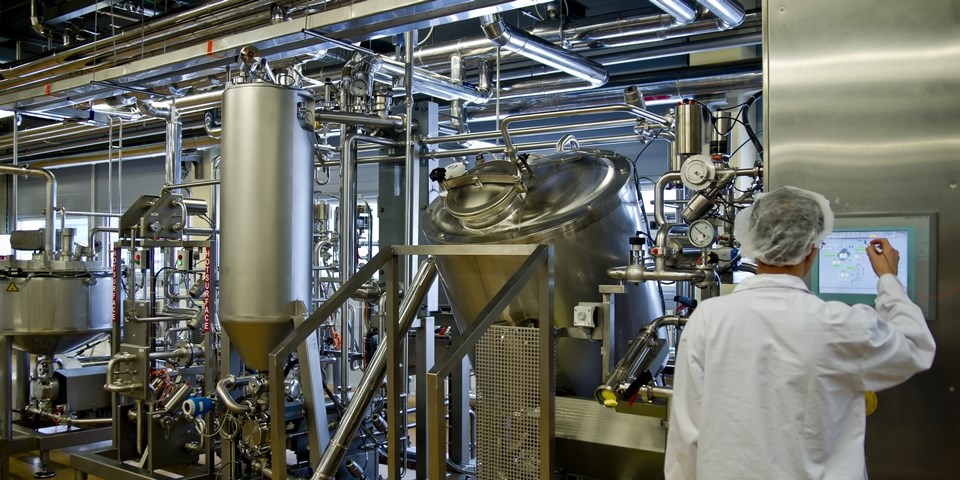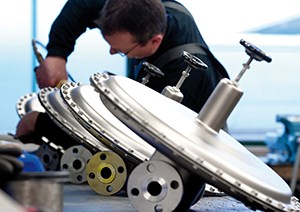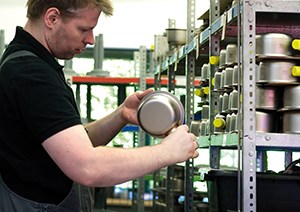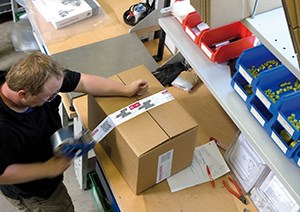Article by Lucien Joppen.
___
Damned it if you do, damned if you don’t. This seems to be the underlying motto for spare parts management. If certain parts are in storage too long, those parts are already incurring cost as they have been paid for and just take up storage space. If certain parts are missing when needed, unexpected downtimes might lead to millions of dollars of lost production.
Desk research shows that there is a tendency across various industries to control their inventory costs for spare parts. Rather than maintaining a comprehensive inventory, companies expect plant managers to keep these costs under control while keeping their plant on track regarding production targets.
For example, in the food and beverage industry, industry surveys have been conducted that underline the above statement. The US magazine Spare parts: speed and agility needed Food Engineering asked F&B companies (in 2015) how much they were allocating to spare parts. The survey showed that both mean and median spending were down compared to 2014.
From reactive to proactive From the perspective of the plant manager, this means that he or she has to apply a more strategic approach to spare parts management, rather than relying on perception or intuition. In order to devise a spare parts management strategy, there are some factors that need special consideration. From an operational standpoint, this would mean shifting from a reactive to planned/predictive approach. This is especially relevant in maintenance, where predictive models are gaining ground. Based upon the collection and analysis of various data: production-related, external (weather patterns etc.), more accurate predictions could be made regarding repair and/or replacement when needed.
The second issue on the agenda would be to eliminate out-of-stocks as much possible. According to various articles on this subject, it helps if the reasons behind these out-of-stocks are identified and eliminated/minimized. Critical in this respect are spare part lead times. Depending on the criticality of the part in the operation and its lead times, spare parts can be left out or kept in storage.
Speed and agility
Generally, it is advised to conduct periodical reviews of both critical and non-critical spare parts as classification of spare parts can change over time, for example, the availability due to suppliers entering or exiting the market. These periodical reviews are also needed to review the spares on stock.
Apart from the aforementioned issues, a cost-effective spare parts management strategy is based upon a risk analysis, focussing on cost. By calculating the cost of an unexpected shutdown (one hour) and factoring in specific lead times for a critical part, plant management would be able to make an informed decision about the (pre-) ordering and storage of such an item. As lead times in the supply chain are critical, the proximity of suppliers to their clients is an important factor.
“In our experience, the predominant strategy of many companies/end users is to build up customer proximity”, Oliver Krohn says. Krohn, digital market development manager at the German valve manufacturer Mankenberg, states that speed and agility are becoming more important for its clients. “If you are just around the corner, whether through own branches, distributors or dealers, you are well-positioned to capture your fair share of the spare parts business.”
Modular system
The proximity to end users is important but not the be-all and end-all, according to Henning Tietz, Head of After Sales Service for Mankenberg. “We have developed the so-called M-TIME-concept in order to increase our responsiveness to market demands. M-TIME consists of M-BASE, M-EDIT and M-Extra. The first stands for a promise to our clients: a 48 hour delivery promise (assembled to order) so that replacement valves are available quickly and reliably.”
Mankenberg analysed and optimized the internal storage and supply of parts needed for M-BASE valves. The change in this procedure has improved the production time of those valves. The Mankenberg modular system of valve production allows making delivery time promises. The storage of semi-finished products is the key factor for the delivery promise of M-EDIT valves, Tietz says. “The promise of ‘ready for dispatch within 15 working days’ for modified standard valves (e.g. special clamp connection) requires semi-finished products to be available quickly and reliably. We also have a large selection of spare parts in stock, available in a wide variety of materials so that we are able to supply spare parts from stock, despite numerous valve types and variations.” Mr. Tietz explains that the launch of the M-TIME concept allows the ability to supply common spare parts from stock for standard valves (M-BASE) and modified valves (M-EDIT).
Challenges in sourcing
From the perspective of the end user, the dependency on its suppliers might also pose a challenge in spare parts management/ procurement as alternative options can be limited. In the aforementioned industry survey from Food Engineering, roughly 30% of the respondents said the greatest challenge is finding ‘multiple sourcing options’. In the same survey, respondents said that (an increasing) standardisation of parts and equipment would be beneficial in ‘widening’ the procurement pool. The same procedure would also be helpful in creating some sort of consistency in naming parts in order to facilitate, more easy, queries for spare parts from alternative sources. Ideally, a search database for spare parts would be helpful to make the supply chain more transparent and ultimately alleviate the quest for the best possible option, factoring in cost, availability, lead times and so on.
Digitalisation
The absence of some sort of database indicates that further steps are needed in digitalizing the supply chain. Mankenberg is very active in this field, as Krohn is asserting. “Digitalisation is needed – a prerogative for a more responsive and cost-effective supply chain. Coupled with (the advance of) predictive maintenance, the ordering process ultimately will take place on a more regular basis, but with smaller batches.
For this model to work, a higher degree of automation is needed in order to minimize shipping and handling costs. We are currently working intensively with online shop solutions, effectively collaborations with e-commerce platforms and digital data pack twins for some of our valves in order to streamline our service to our clients. Linking online shops of our distributor networks may prove to be the way to market standard valve solutions.
Other standardised e-commerce platforms seem to be a suitable solution to process even quicker spare packages and link the external platform to both, the existing online hub and internal processes.”
Case study French food manufacturer
Dr. Stefan Nehlsen, CEO of Mankenberg, posted a case study on the company’s LinkedIn page pertaining to its spare parts strategy.
“In our case, we have already changed a lot to keep downtimes at this specific plant, located in France, as short as possible. Therefore, we have revised and optimised our entire logistics concept M-TIME. This means that we have eliminated any slack in the internal administrative routine. Manufacturing an industrial valve within 48 hours and sending it to the customer (from Germany to France) is already a daunting task, but this is one of the things we understand concerning customer centricity.”
Nehlsen states that a further reduction of downtimes requires a supply chain approach which involves all suppliers involved. “It is not only the individual companies who must assimilate to this way of thinking, but the complete supply chain, i.e. from the raw material supplier to the shipping service provider, who brings the parts safely to their destination.”
Spare parts management: not only MRO
According to a blog from the company Sigma Thermal, a manufacturer of process heating systems, some end users wrongfully assume that brand new equipment doesn’t requite adequate spare parts management. According to Sigma Thermal, this way of thinking sounds logical, but everyday practice proves otherwise. “There is also an assumption that vendors will supply perfectly functioning quality parts, and typically they do, but part failure upon start-up is a common occurrence. Having proper spares on hand for the start-up/commissioning of new equipment is extremely important.”





